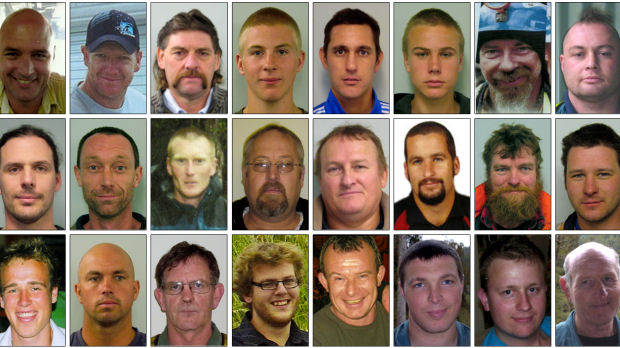New Zealand mine: rescue continues as hopes fade
Officials remain “optimistic” over the fate of the 29 people trapped after an explosion at a New Zealand coal mine, but warn they are planning for all outcomes – including loss of life.
Two Scots are among the 29 people left missing after an explosion ripped through the Pike River mine in Atarau on New Zealand’s South Island.
Safety fears over dangerous gas left in the mine have stalled rescue efforts. Teams have still not entered the mine more than three-days since the blast.
New Zealand Prime Minister John Key said there is “every chance” the 24 New Zealanders, two Australians, two Britons and one South African are still alive.
Police Superintendent Gary Knowles told a news conference today: “We still remain optimistic and are keeping an open mind, but we are planning for all outcomes and the possible loss of life as a result of what has happened underground.
“We remain positive and we are going forward until we get a result.”
We still remain optimistic..but we are planning for all outcomes and the possible loss of life. Police Superintendent Gary Knowles
Officials were today drilling a 500ft (152m) hole from the mountain above the mine to assess air quality and to lower listening devices. A hi-tech robot was also being prepared to be sent into the mine to transmit pictures and take more measurements.
Authorities say it is possible that the miners have survived the blast and are sheltering in an area where the air is cleaner.
Andrew Watson from the Mines Rescue Service in the UK told Channel 4 News that the explosion meant rescuers had lost the ability to monitor the mine’s atmosphere: “As I understand once they get this borehole down they’ll be able to get accurate readings from inside the mine.
If you know people are alive you might be willing to take more of a risk with the rescue. Andrew Watson, Mines Rescue Service
“That’ll indicate whether it is safe to send people down there and possibly if anyone is alive.
“If you know people are alive you might be willing to take more of a risk with the rescue.”
Andrew Watson said that the men would have been well trained: “If they’ve managed to separate themselves from the ventilation circuit then they could be safe for some time. If not then we’re facing a grim situation.”

‘No contact’
Police said there was still too much combustible and noxious gas present for rescuers to enter safely, despite fresh air being pumped down the mine through an open air line.
Mr Knowles said: “The situation remains grave, given we’ve had no contact from the men for more than three days.
“This is a search and rescue operation. We’re basically going to go in there and bring these guys out.”
The disaster follows the ordeal of 33 Chilean miners trapped in an underground chamber for two months before their dramatic rescue last month, when they were hoisted one by one to safety through a hole drilled 700 metres through rock.
Family hope
Families of the two Britons – Pete Rodger, 40, from Perthshire, and Malcolm Campbell, 25 from St Andrews, Fife – have been speaking about their ordeal as they await news from the mine.
Mr Campbell’s father, Malcolm senior, 50, and mother Jane, 45, said they were clinging on to the hope of receiving some good news about their son.
“Our prayers and thoughts go out to everybody who is going through this in New Zealand. We just keep hoping that everything will be fine,” they told STV News.
Mr Campbell is due to marry his fiancee, Amanda Shields, 23, next month.
It wasn’t just a bang, finish – it just kept coming, kept coming, kept coming. Miner Russell Smith
Miners speak of explosion
One of two miners to escape the blast described being bombarded with a wall of dust and debris.
Russell Smith told New Zealand’s TV3 news that he was driving a loader into the mine when he saw a flash in front of him.
“It wasn’t just a bang, finish – it just kept coming, kept coming, kept coming, so I crouched down as low as I could in the seat and tried to get behind this metal door, to stop getting pelted with all this debris.
“I remember struggling for breath. I thought at the time it was gas, but it was dust, stone dust. I just couldn’t breathe. And that’s the last I remember,” he said.
Colleague Daniel Rockhouse pulled him to safety and, when he regained consciousness, the pair took at least an hour to walk out of the dust-choked tunnel.
-
Latest news
-
Yungblud launches his own affordable music festival5m

-
Why these Americans want to quit their state9m

-
Company behind infected water outbreak are ‘incompetent’ says local MP5m

-
Israeli forces push deeper into Northern and Southern Gaza4m

-
India’s ‘YouTube election’: Influencers enlisted to mobilise youth vote6m

-




